The fridge PC:
Yes it is entirely possible from a mathematical standpoint to build a PC in a fridge. A couple concepts you may not be expecting to deal with...
A couple people have noted that removing the heated air from the unit is a key element to cooling. This is true, but the idea of the fridge is to remove the energy from that air through a simple evaporation process. The whole point of moving air out of a conventional PC is to maintain a low average case temperature. The lower the temperature of the air entering a heat exchanger, the more heat it can carry away. Thus making sure the temperature inside the fridge is uniform (well stirred) facilitates the greatest energy removal. Fans need to be in place to ensure a rapid movement of air across exchangers, and about the fridge/case.
Condensation
ANY TIME YOU HAVE LOWER THAN ROOM TEMPERATURES IN THE VICINITY OF PC COMPONENTS, YOU RUN THE RISK OF CONDENSATION DAMAGE. It doesnt matter how you get the low temp matter there, the air around that point will be cooled and the partial pressure of water in the vapor phase will drop.
This is certainly a key problem to the fridge/case scenario but there are two answers to the problem. The first step is to make sure you don't bring fresh air into the case. Fresh air is warmer, and, like all warm gases, will carry more water vapor with it. When this air drops in temperature, condensation forms. A well sealed fridge/case is the first step to avoiding this. Second, chemical adsorption of the moisture. Chemists use desiccators to dry many samples in standing air. The solution is to simply make sure the air is constantly having water vapor removed. As the air gets drier, even liquid phase water will evaporate (to compensate the loss, a concept called equilibrium). This is often facilitated with a chemical called "drierite." Merely a solid platform of gypsum (calcium sulfate) it readily pulls moisture from the air. This will help remove any excess water from the air and is readily available (gypsum is a key ingredient in drywall).
Power-
Somebody was quite incorrect on the previous quote of removing energy being easier than heating. Heat sources are far more efficient than cooling. In the United States, a refridgeration is normally the largest single consumer of power in any home. Luckily, a computer doesnt necessarily draw all the power needed from the power supply at all times. In other words, a 450 W powersupply doesnt deliver that energy if there isnt a demand for it. If power was constant over your system, heat production would be constant, but systems change based on load. The fridge has a moderately low initial temp, but this will rise as use continues. Long term gaming may result in worse conditions than initial operation in a standard case. The same can go for water cooling. Both scenarios are easy to test, however. Simply place a thermometer inside the cooling resevior or inside the fridge. Your temp will go up at first, but should reach a "steady-state" profile where the heat generated equals that removed. (If the temp didnt go up there would be no drive for heat transfer so its not a bad thing, but the lower the better) This is where you want to measure the temp.
The real deal:
Water cooling vs fridge
WATER COOLING WINS HANDS DOWN. Why? It has nothing to do with temperature, it has to do with the convective heat transfer coefficient. Energy is transferred when a "cold" molecule in your air/water meets up with the "warm" molecules of your heat exchanger. Gas phase is a less dense phase. There are fewer molecules to run into. This slows the heat transfer process. Liquid phase heat transfer coefficients are at least 10x-100x greater than those of gas phase. Many people worry about silver and copper and stainless steel heat transfer coefficients but these are on the order of 2x or 3x of one another. In the end, the temperature limitations are hardly the problem of overall energy transfer rates. It all comes down to the heat transfer coefficients.
I have made systems with liquid nitrogen cooling here on campus. We put a ceramic cup filled with LQ N2 on top of a processor and played around

It was actually interesting to see. A properly designed interface, with good contact, the right amount of thermal paste, and flat clean surfaces (and heatsinks DUST BLOCKS HEAT TRANSFER) is far more effective than an expensive mod replacement.
If you think your radiator is too small, try adding a recycle stream from post radiator, back to the reservior. Use thinner inner diameter tubing as a fixed pressure drop to prevent large amounts of water from flowing backwards. This will, however, essentially increase the size of your radiator (assuming pumping power is available). The ratio of water to components vs water to radiator is extremely important. Increasing your flowrate to the radiator will help bring down the overall temp of the water. Do you have good convective flow across your radiator tubes? (air blowing) Are the tubes relatively clean and rust free? Is your heat sink contact properly attached to your system?
Hope this clears up some things. Im finishing my master's in Chemical Engineering, I design industrial heat exchangers for a living.



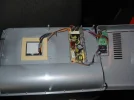
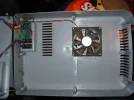
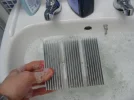
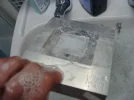

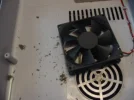

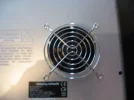

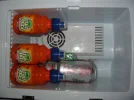
 It was actually interesting to see. A properly designed interface, with good contact, the right amount of thermal paste, and flat clean surfaces (and heatsinks DUST BLOCKS HEAT TRANSFER) is far more effective than an expensive mod replacement.
It was actually interesting to see. A properly designed interface, with good contact, the right amount of thermal paste, and flat clean surfaces (and heatsinks DUST BLOCKS HEAT TRANSFER) is far more effective than an expensive mod replacement.